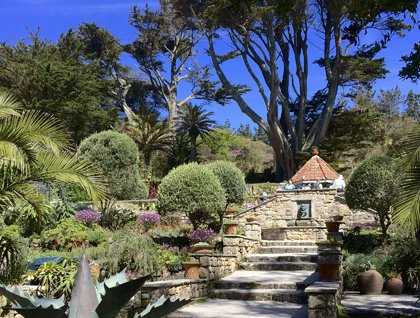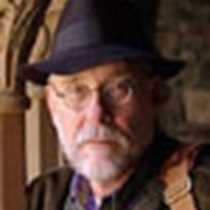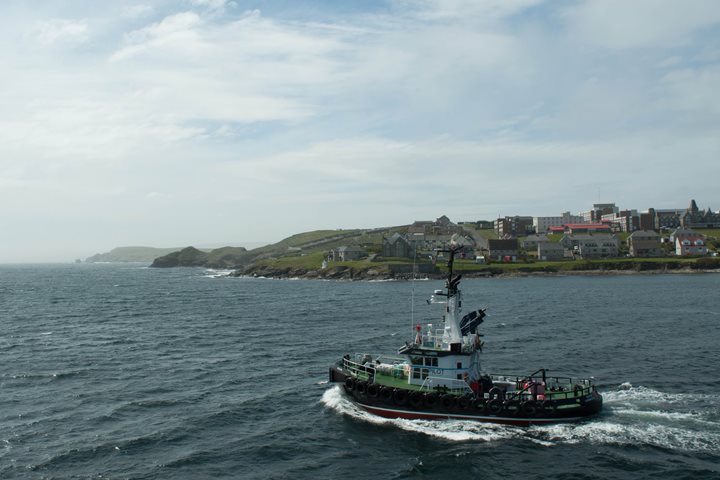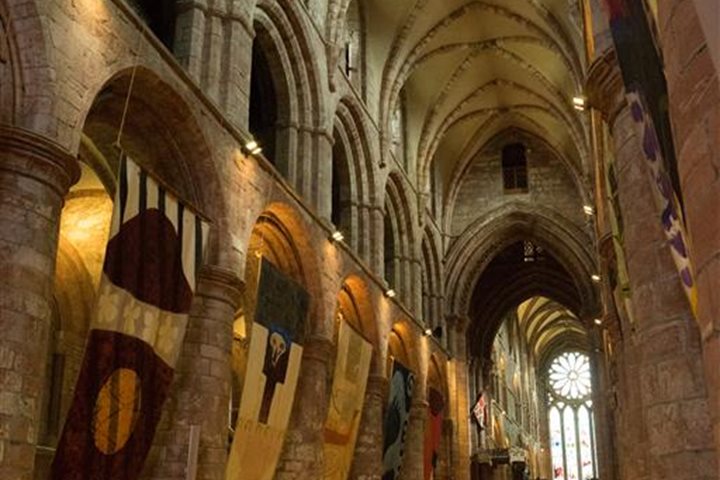Tresco is one small island in the archipelago that comprises the Isles of Scilly off the southwestern tip of the British mainland. One might add, a growing archipelago as the landscape is one that has resulted in inundation by the sea in historic times as a consequence of isostatic rebound since the retreat of the glacial ice cap that covered northern Britain and Ireland. Tresco now sits off the island of St Mary’s to which it was attached as recently as the fifteenth century, where the main town of the Isles of Scilly is situated. Hugh Town, a town that before the inundation was an inland settlement but which now provides a haven to Scillonian, the ferry to the mainland some three hours sail eastward. Before breakfast, in brilliant early morning sunshine, we anchored mid-channel between the two islands, our base for a day’s exploration of Tresco.
In 1832, the island of Tresco, a landed estate, came on the market and was purchased by Augustus Smith who had the romantic vision and practical wherewithal to embark on a project to create a garden of sub-tropical plant specimens in the shelter of a carefully designed wind belt of protective trees. The garden has flourished down the generations with current members of the family still very hands-on in managing a garden which is of international importance. The secret of its success is to harness the full benefit of the island’s position in the North Atlantic Drift, the tail end of the warming Gulf Stream that enables luxuriant gardens in Britain and Ireland to flourish at latitudes comparable to Newfoundland or even Labrador. We toured the gardens with the enthusiastic and knowledgeable gardeners and delighted in the riot of color that a Tresco spring offers the lucky visitor.
In the garden we also visited Valhalla, a national collection of figureheads from ships, many of which were wrecked on their approach to this archipelago. Departing Tresco in the evening we sailed past the great mid-nineteenth-century lighthouse of Bishop Rock, designed to end this steady stream of destruction. And in our evening recap, we learned of the fate of the English fleet under the command of Admiral Sir Cloudesley Shovell, wrecked on the Western Rocks in October 1707 whilst returning from engagement with the French at Toulon. Following what was in effect a national disaster, the government offered a reward to anyone who could find a means of determining the accurate measurement of longitude, a competition won after many years of effort by a provincial clockmaker, John Harrison, who grasped that what was required was an accurate knowledge of time in two places simultaneously; the time at the home port and that on board the voyaging ship. Pendulum clocks did not function accurately with the motion of a ship or with changes in temperature but Harrison persisted with his experiments to produce a clock that would tell accurate time at sea. By 1759, over half a century after the Sir Cloudesley débâcle off the Isles of Scilly, a fourth version of the Harrison clock (H4) proved to be decisively accurate following a trial voyage from Portsmouth to Barbados. Harrison finally received his monetary reward of £20,000.
Some two and a half centuries after the wreck of the English fleet, our day at Tresco had been blessed with fine weather, and with GPS navigation our passage to and from the archipelago was safe and secure. But these are Jekyll and Hyde islands with a schizophrenic personality. We experienced their sunny side and, mercifully, only learned of their darker side at second hand.









